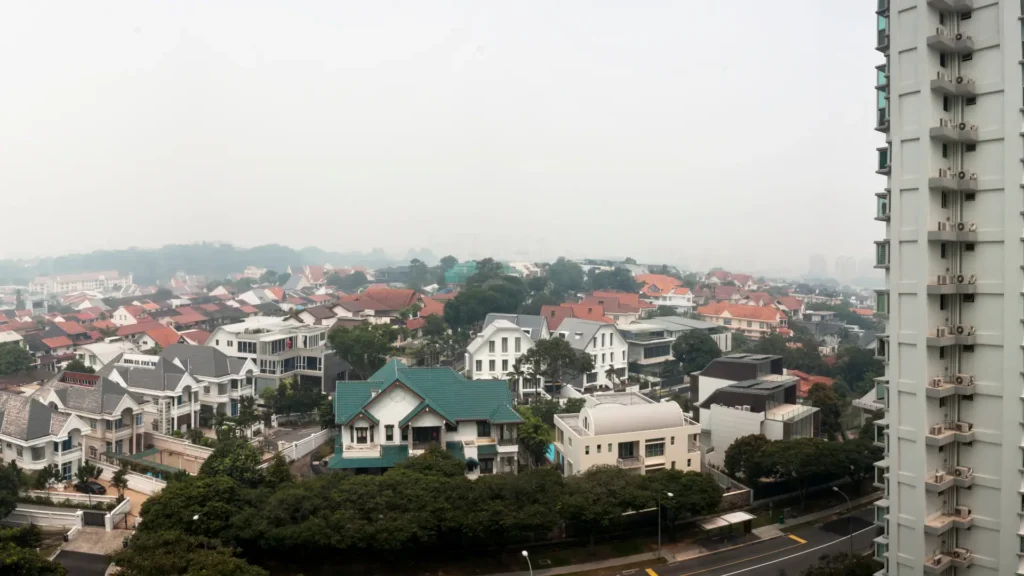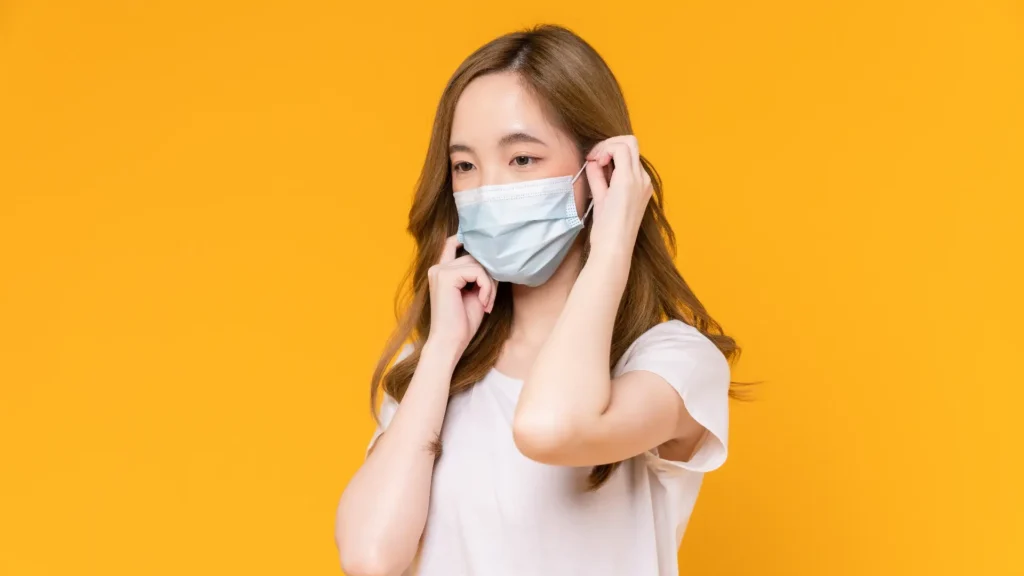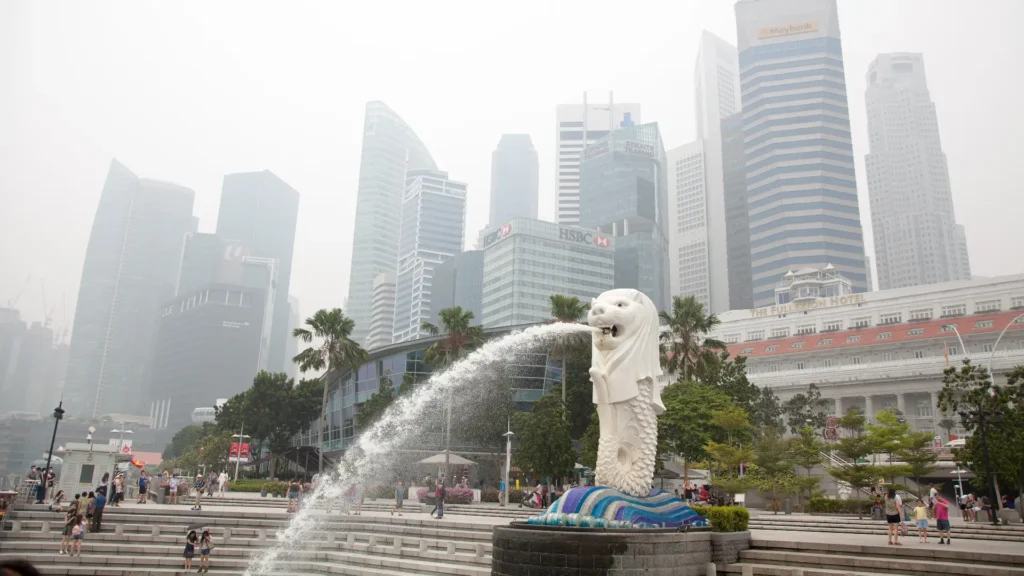Haze is more than just an atmospheric condition. It obscures visibility, fills our lungs with harmful particles, and poses significant health risks. Composed of smoke, dust, and moisture, haze can lead to a variety of symptoms such as conjunctivitis, sore throat, cough, shortness of breath, and tiredness.
Do these conditions sound familiar? They indeed represent a clear and present danger during the haze season. But the good news is – you don’t have to be a helpless victim. Equip yourself with knowledge and the right tools to combat this annual scourge.
Today we will be creating our own “Ultimate Haze Survival Kit”: a group of items that would better protect ourselves, families and loved ones from the haze. This comprehensive kit, filled with practical and effective items will mitigate risks associated with haze exposure. We will also be learning more about the effects of haze and how it affects our health.
Understanding the Haze

Haze is a condition in the atmosphere where there is reduced visibility because of small particles suspended in the air. These particles, like smoke, dust, and moisture, scatter and absorb light, causing the characteristic gray or brown haze over landscapes.
Effects on Air Quality and Visibility:
Haze has negative effects on both air quality and visibility:
- Air Quality Deterioration: When there is haze, the air quality usually gets worse. There are tiny particles called PM2.5 that can reach unhealthy levels during severe haze.
- Reduced Visibility: Haze makes it hard to see things clearly, which can be dangerous for transportation systems and people driving or flying. It also makes natural scenery less beautiful, affecting tourism and outdoor activities.
Impact on Well-being:
Haze can have various impacts on our well-being:
- People may experience physical symptoms like difficulty breathing, irritated eyes, or worsened allergies when there is haze.
- Being exposed to dull and obscured skies for a long time can also cause psychological discomfort.
Constituents of Haze:
Haze is made up of three main components:
- Smoke: This comes from things like wildfires or burning crops. It is mostly made of carbon-based materials.
- Dust: Dust particles come from sources such as construction sites, deserts, or dry areas. They are tiny pieces of soil that have been ground up.
- Moisture: When there is moisture in the air, it can combine with pollutants in cities to create smog.
By knowing what these different parts are and understanding how they can affect our health and safety, we can be better prepared when there is haze around us.
Outdoor Activity Guidelines Based on PSI Levels
The severity of haze conditions can be understood by referencing the Pollutant Standards Index (PSI). Here’s an easy to understand guide on what the different PSI ranges indicate, and how they might affect you:
0 – 50 (Good air quality): Regular daily activities can continue without interruption.
51 – 100 (Moderate air quality): There might be a minor decline in visibility, but no immediate cause for concern.
101 – 200 (Unhealthy air): You may start to experience discomfort in your eyes, nose and throat. Those with heart or respiratory issues should avoid intense physical and outdoor activities. Vulnerable groups like children, pregnant women and elderly should decrease strenuous activities.
201 – 300 (Very unhealthy air): The elderly and those with chronic illnesses are advised to stay indoors, while the general population should limit excessive outdoor activity.
301 – 400 (Hazardous air): Even healthy individuals may start experiencing symptoms that limit normal activity.
Above 400: It is recommended for everyone to stay indoors, keep all windows and doors shut, and reduce any physical activity.
Get real-time updates on the haze situation in Singapore from the National Environment Agency website.
Health Risks Posed by Haze Exposure

Exposure to the haze can trigger a variety of haze symptoms that affect daily life and overall health. Individuals might experience:
- Irritation of the eyes, nose, and throat
- Sore throat and cough
- Shortness of breath
- Conjunctivitis
- Fatigue or weakness
The impact is most significant among vulnerable groups, including children, pregnant women, the elderly, and those with pre-existing heart or lung conditions, such as asthma or chronic obstructive pulmonary disease (COPD). These groups may experience more severe symptoms and require extra precautions.
Given the severity of these health concerns, it’s crucial to understand both short-term and long-term effects.
Short-term Haze Exposure Effects
Short-term haze exposure can result in immediate discomfort and exacerbation of chronic illnesses.
Long-term Haze Exposure Effects
The full spectrum of long-term haze exposure health consequences remains under study; however, there’s consensus on the potential for lasting damage to respiratory and cardiovascular health.
Protecting vulnerable individuals from the adverse effects of haze becomes paramount during periods of high air pollution. Tailored guidance for these groups ensures they have strategies to mitigate their risk during haze episodes.
As you consider these risks, it becomes clear that preparation and prevention are key to maintaining good health when faced with hazy conditions.
Staying Informed: Monitoring the Haze Situation

Staying on top of the haze situation is critical to safeguarding your health. Real-time PSI readings provide a snapshot of current air quality, helping you make informed decisions about outdoor activities and indoor air management. Here are ways to access up-to-date information:
1. myENV App
A go-to resource for Singapore residents, the myENV app offers comprehensive environmental data, including hourly PSI updates. The user-friendly interface makes it easy to stay informed with just a few taps on your smartphone.
2. Social Media
Following the official Twitter and Facebook pages of environmental agencies ensures that you receive timely haze updates. These platforms often share health advisories and tips to cope with poor air quality.
3. Corporate Website
For a deeper dive into haze-related statistics and forecasts, the corporate website of your local environmental authority is an invaluable tool. Detailed information on PSI levels across different regions can be found here.
4. NEA’s Haze Website
Dedicated to haze alerts, this website provides news, health advisories, and FAQs to help the public understand and react appropriately to haze conditions.
Remember, keeping these sources at your fingertips allows for quick reaction times when air quality changes. By staying informed, you take a proactive stance in protecting yourself and loved ones from the adverse effects of haze exposure.
Building Your “Ultimate Haze Survival Kit”
When the air fills with haze, it’s crucial to have a strategy in place. Enter the “Ultimate Haze Survival Kit”—a collection of items designed to defend against the risks associated with poor air quality. Tailored for efficacy and practicality, this kit ensures you’re ready to face the haze head-on.
Essential Items for Your Kit:
Here are the essential items you should include in your haze survival kit:
- N95 Masks: These masks are your first line of defense, filtering out fine particles that common surgical masks cannot.
- Air Purifiers: Equipped with HEPA filters, they can significantly reduce indoor particle concentration.
- Humidifiers: By maintaining optimal humidity, these devices help prevent irritation in your respiratory tract caused by dry air.
- Eye Protection: Goggles or glasses prevent particulate matter from irritating your eyes.
- Saline Solution/Nasal Spray: Ideal for cleansing nasal passages and mitigating irritation.
- Water Bottles: Staying hydrated is key to helping your body naturally flush out contaminants.
- Non-perishable Snacks: Keep a stash of healthy snacks to avoid opening windows or doors during peak haze periods.
- First-Aid Kit: Ensure it includes medications for respiratory issues and allergic reactions.
Remember to check each item regularly and replenish as needed. Keeping your survival kit up-to-date is just as important as having one in the first place. With these tools at your disposal, your health and comfort can remain top priorities, even when the air quality suggests otherwise.
Practical Measures for Indoor Haze Protection
When the air outside is thick with haze, it’s crucial to maintain indoor air quality to safeguard your health. Here’s how you can reduce indoor haze exposure and breathe easier during these trying times:
1. Seal Your Home
Start by keeping all doors and windows closed. This simple action limits the amount of outdoor polluted air entering your living space.
2. Control Air Pollutants
Be aware of activities that could contribute to poor indoor air quality, such as smoking or burning candles. Opt for smoke-free alternatives to minimize indoor air pollutant production.
3. Adopt Wet-Cleaning Methods
Dust particles can exacerbate haze conditions inside. Replace dry-dusting and vacuuming with wet-cleaning methods like mopping or using damp cloths to capture fine particles without stirring them up into the air.
4. Optimize Air Circulation
Utilize fans or air-conditioners not only for cooling but also to keep the air moving within your home. Proper air circulation can prevent stagnation and promote a fresher indoor atmosphere.
5. Invest in Air Purifiers
Consider adding portable air purifiers to your home, especially in bedrooms and living areas. These devices are designed to filter out fine particulate matter, helping you breathe cleaner air indoors.
By following these measures, you create a sanctuary that shields you from the brunt of the haze outside. Keep an eye on air quality readings and adjust your strategies accordingly to ensure maximum protection indoors.
Ensuring Your Safety Outdoors: The Right Way to Use N95 Masks
When stepping outside during haze conditions, the right mask can be a game-changer for your health. N95 masks are designed to provide a close facial fit and efficient filtration of airborne particles. Here’s how to use these masks correctly for maximum protection:
N95 Mask Usage Tips:
- Check for Certification: Ensure your N95 mask is certified by the relevant health authority.
- Inspect the Mask: Before wearing, inspect the mask for tears or holes; do not use if damaged.
Achieving the Proper Fit:
- Wash Your Hands: Always start with clean hands to avoid contamination.
- Position Correctly: Place the mask over your nose and mouth, and secure it under your chin.
- Ensure a Tight Seal: Press down on the metal strip or stiff edge of the mask so it molds to the shape of your nose.
- Check for Gaps: Adjust the mask until you have a proper fit, with no gaps between your face and the mask.
Wearing and Removing:
- Follow 6 Steps When Putting on Mask:
- Wash hands
- Hold mask by ear loops
- Secure ear loops behind ears
- Adjust to cover nose/mouth without leak
- Press down on metal strip
- Check seal and adjust if necessary
- Safe Removal: Do not touch the front of the mask; remove using ear loops, wash hands immediately after disposal.
Post-Usage Precautions:
- No Sharing: Never share your N95 mask with others.
- Single Use Only: Do not reuse an N95 mask that is soiled or distorted in shape.
Normal surgical masks are ineffective against fine particles and will not offer adequate protection during haze episodes. Stick to certified N95 masks that are designed to filter out harmful particles for outdoor activities amidst haze conditions.
By adhering to these guidelines, you can significantly lower your risk of inhaling hazardous particles when outdoors during haze periods.
Stay vigilant about air quality updates and plan your outdoor activities accordingly, especially when air quality deteriorates.
Special Considerations for Vulnerable Individuals

For vulnerable groups—children, pregnant women, the elderly with heart or lung conditions, and individuals with pre-existing diseases such as bronchitis or sinusitis—haze can pose a significant threat to health. The following measures are recommended:
Precautions for Vulnerable Individuals During Haze
- Monitor Air Quality: Keep track of the Pollutant Standards Index (PSI) and 24-hour average PM2.5 readings to stay informed about air quality.
- Wear N95 Masks Outdoors: When PSI levels surpass 200, it is critical for vulnerable groups to wear N95 masks outside. This is in contrast to the general threshold of PSI 300 for healthy individuals.
- Stay Indoors: Limit time spent outdoors, especially during periods when the haze is at its peak.
- Avoid Strenuous Activities: Engage in light indoor activities instead of outdoor exercises when PSI readings exceed 101.
Related: 5 Ways to Combat Common Health Problems in the Elderly
Seeking Medical Help: When to Consult a Doctor for Haze-related Symptoms

Encountering haze-related illnesses may necessitate a visit to healthcare services. Recognizing when symptoms are severe enough to require medical attention is crucial. Here’s what you need to watch out for:
1. Persistent Respiratory Issues
If coughing, wheezing, or difficulty breathing persists despite taking preventive measures, it could be a sign that the haze has significantly impacted your respiratory system.
2. Unrelenting Eye and Throat Irritation
Should sore throat, itchy eyes, or eye redness not subside with standard home care, these could indicate an aggravated condition needing medical intervention.
3. Aggravation of Pre-existing Conditions
Individuals with chronic heart or lung diseases experiencing an exacerbation of symptoms should promptly seek professional advice.
4. Symptoms in Vulnerable Groups
Children, pregnant women, the elderly, and those with compromised immune systems displaying any unusual health signs must consult a doctor swiftly.
5. Unusual Fatigue or Chest Pain
Excessive tiredness or any form of chest pain during the haze period warrants immediate medical evaluation.
Promptly addressing these symptoms with healthcare professionals can help mitigate the effects of haze exposure and prevent long-term health complications. Remember to communicate clearly about your symptoms and any pre-existing conditions to ensure appropriate care.
Conclusion
Navigating through haze requires a dedication to protecting personal health. The Ultimate Haze Survival Kit is an essential resource that provides individuals with the tools they need to address haze dangers directly. By gathering this kit, you are actively working to shield yourself and your family from the negative impacts of haze.
Staying updated, having the correct gear ready, and knowing when to seek medical assistance are important tactics in preserving your well-being during these difficult times. Your health is priceless; allow the Ultimate Haze Survival Kit to give you the strength to prioritize it during haze episodes.


